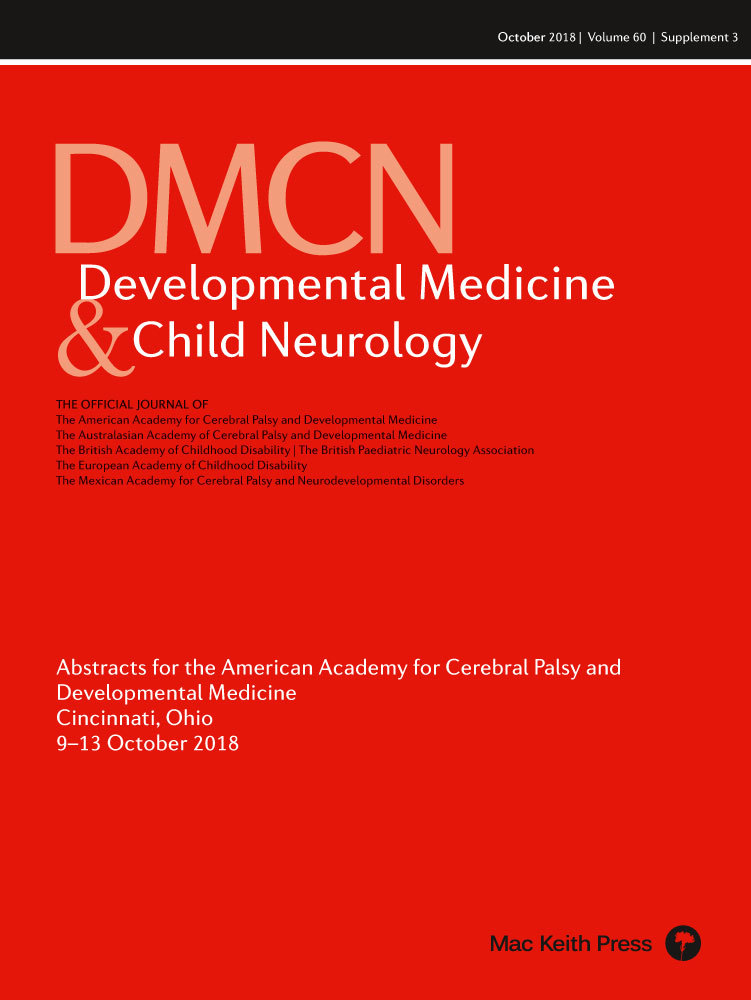Norm reference values for the hand assessment for infants (HAI), and their usefulness
K2
L Ek1 , A-C Eliasson; 2, E Sicola; 3,4, G Sgandurra; 3,5, G Cioni; 3,5, L Krumlinde-Sundholm; 1
1Karolinska Institutet, Solna, Sweden; 2Department of Woman's and Children's Health, Stockholm, Sweden; 3Department of Developmental Neuroscience, IRCCS Stella Maris, Pisa, Italy; 4University of Pisa, Pisa, Italy; 5Department of Clinical and Experimental Medicine, University of Pisa, Pisa, Italy
Background and Objective(s): The Hand Assessment for Infants (HAI) was recently developed for children at risk of cerebral palsy (CP) age 3–12 months and found to have excellent internal scale validity. HAI is the first standardized test that measures how well the infant uses both hands together, as well as each hand separately. The HAI produces criterion referenced outcomes for two scales: the Each Hand sum score and the bimanual Both Hands together measure. Furthermore, an Asymmetry index of difference between hands is provided. The rapid development of hand skills during the first year of life makes it important to know if results are within typical development or indicate a deviating use of hands. The aim of this study was to create normative reference values and to investigate whether typically developing infants exhibit an asymmetric use of hands.
Study Design: Instrument Development & Validation Study.
Study Participants & Setting: Infants from Sweden and Italy participated. Inclusion criteria were (i) 3–10 months of age; (ii) term birth (≥37 week's gestational age); (iii) an overall typical development, as reported by the parents. The Swedish sample was primarily collected at child health centers and drop-in preschools in Stockholm. The Italian sample was primarily recruited through leaflets in different pediatric national health services within the north-west area of the Tuscan region.
Materials/Methods: The HAI results from 489 assessments of 476 typically developing infants from 3 to 10 months of age (mean 6 months 14 days, SD 2 months 5 days) were collected and divided into eight norm blocks. Each norm block covered one completed month of age, each including 47–74 infants.
Results: Growth curves with mean and ±2 SD were created and showed a steady increase in mean value and a decrease in SD over age. There were no differences between groups based on sex or nationality. Difference in the Each Hand Sum score between the two hands was only 2 points or less for 98% of the infants. To describe the development with age for each item, curves were created from data dichotomized (pass or fail), showing the percentage of infants having acquired that specific skill at any given age. The items were considered acquired when 95% of the infants in a specific age group had passed it.
Conclusions/Significance: Age norms serve as a reference point and results below 2 SD indicate performances lower than what is expected for age. This information, together with knowledge about the very small side difference between the hands in TD infants, makes the HAI useful for early identification of infants with a general deviating development of hand use, or at risk of unilateral CP. Thus, the previously reported criterion referenced HAI outcomes are useful to measure hand use ability and to evaluate change over time, while norm reference values can identify children who have a bilateral or unilateral deviating hand use and are legitimate for diagnose and rehabilitation services.




